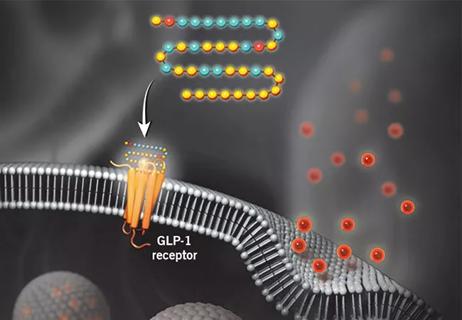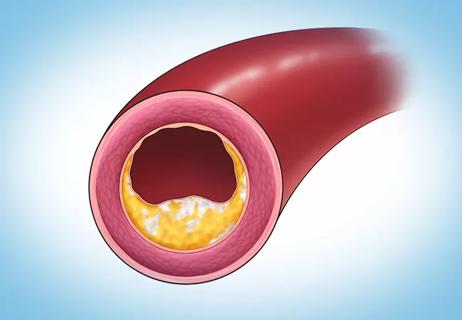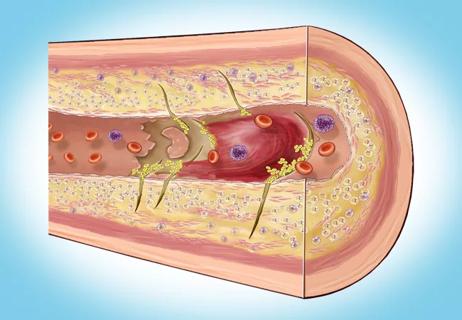Site visits offer firsthand lessons in clinical and operational excellence in cardiovascular care

An alliance relationship with Cleveland Clinic’s Heart, Vascular and Thoracic Institute (HVTI) Advisory Services team offers a range of strategic, clinical, quality and operational benefits for hospitals. These collaborations are designed to elevate cardiovascular care quality, align with evidence-based best practices, and improve outcomes and operations through coordinated efforts, resource sharing and focused project work.
Advertisement
Cleveland Clinic is a non-profit academic medical center. Advertising on our site helps support our mission. We do not endorse non-Cleveland Clinic products or services. Policy
TriHealth, a health system in Cincinnati, Ohio, has long been recognized for its commitment to exceptional outcomes, continuous improvement, and high-quality, patient-centered care. In keeping with that tradition, in 2022 TriHealth’s Bethesda North Hospital and Good Samaritan Hospital entered into a strategic alliance with Cleveland Clinic’s HVTI, which is nationally and internationally renowned as a leader in cardiovascular care.
This alliance is designed to build upon TriHealth’s strong foundation by leveraging Cleveland Clinic’s expertise. Through this collaborative relationship, Cleveland Clinic shares its clinical protocols, quality expertise and best practices to enhance TriHealth’s ability to deliver top-tier cardiovascular care and achieve outstanding clinical outcomes for patients in the Cincinnati region.
When a hospital or health system enters into alliance (or affiliation) with Cleveland Clinic’s HVTI, one of the many benefits is the opportunity to participate in in-person site visits to Cleveland Clinic.
These visits provide team members from the alliance or affiliate hospital with a unique opportunity to gain firsthand insight into Cleveland Clinic’s clinical and operational excellence (Table). Participants observe workflows in real time, engage with multidisciplinary teams and explore how HVTI’s collaborative culture and evidence-based practices drive exceptional patient care.
More than just a tour, these site visits foster meaningful professional connections, knowledge exchange and sharing of best practices. The aim is to empower alliance and affiliate hospitals to enhance their own programs and optimize patient outcomes within their communities.
Advertisement
Each site visit is customized to align with the specific goals and priorities of the visiting affiliate or alliance organization. The visits — which typically last one day but can be longer if appropriate — offer significant value through focused, in-person engagement with key clinical and administrative stakeholders, real-time observation of care delivery and dedicated sessions for in-depth, customized Q&A.
| Focus Areas for On-Site Visits by Affiliate/Alliance Hospitals |
|---|
| CLINICAL PRACTICES |
| Sharing of best practices |
| Clinical staff workflow |
| New technologies |
| OBSERVATION |
| Patient throughput |
| Patient intake and triage |
| Insurance preauthorization and registration practices |
| Emergency care pathways (e.g., ST-elevation myocardial infarction) |
| Appointment scheduling |
| Surgeries and procedures |
| Discharge process/follow-up |
| BUSINESS OPERATIONS |
| Business review meetings/dashboards |
| Operating room/procedure room utilization |
| Continuous improvement: quality, improved access, efficiency |
| Focus Areas for On-Site Visits by Affiliate/Alliance Hospitals |
| CLINICAL PRACTICES |
| Sharing of best practices |
| Clinical staff workflow |
| New technologies |
| OBSERVATION |
| Patient throughput |
| Patient intake and triage |
| Insurance preauthorization and registration practices |
| Emergency care pathways (e.g., ST-elevation myocardial infarction) |
| Appointment scheduling |
| Surgeries and procedures |
| Discharge process/follow-up |
| BUSINESS OPERATIONS |
| Business review meetings/dashboards |
| Operating room/procedure room utilization |
| Continuous improvement: quality, improved access, efficiency |
The TriHealth leadership team is entirely committed to optimizing their relationship and has taken full advantage of these site visit opportunities. Over the course of the alliance, multiple site visits to Cleveland Clinic’s Main Campus have been coordinated, involving a broad range of participants including cardiologists, administrative leaders and frontline clinical caregivers. These immersive experiences have supported leadership development, cross-functional learning and adoption of best practices across TriHealth’s cardiovascular service line.
The TriHealth teams that participate in site visits are consistently well-prepared with specific objectives, engaged in discussions and time spent observing operations and workflows, and proactive in collaboration following the visits. TriHealth leadership sets high expectations for their teams and sees the value of the site visits when teams return with enthusiasm for making impactful change rapidly. The feedback following site visits has been consistently positive, with the information and experience garnered while on site being catalysts for project work upon return. Two examples are profiled below.
Advertisement
Cleveland Clinic worked closely with TriHealth’s physician, administrative and clinical leadership to offer support and guidance on launching a specialized hypertension clinic within TriHealth’s preventive medicine program. This collaboration included dedicated meetings and a site visit to Cleveland Clinic, providing a comprehensive look at best practices and operational strategies.
Guidance was offered by Cleveland Clinic physicians from the Section of Preventive Cardiology and Rehabilitation, the Department of Kidney Medicine and the Section of Interventional Cardiology as well as from the advanced practice provider coordinator of preventive cardiology. This team provided valuable input on workflow optimization, resource allocation, data collection and operational efficiency.
In addition, Cleveland Clinic clinicians — including the director of cardiac rehabilitation, an outpatient nurse, an exercise physiologist and a nutritionist — shared their frontline expertise and insight with the TriHealth team. This collaborative approach enabled TriHealth to build a strong foundation for delivering focused, high-quality hypertension management and preventive care to its patient population.
“Visiting Cleveland Clinic really helped bring clarity to our resistant hypertension program,” says interventional cardiologist Stephen Lewis, MD, Cardiology System Chief in the TriHealth Heart and Vascular Institute. “We came away feeling confident that our current approach to treating patients is on the right track.”
Advertisement
“It was especially helpful to see how Cleveland Clinic’s multidisciplinary team works together and uses a wide range of resources to support patients throughout their hypertension journey,” adds nurse navigator Nicolle Halla, RN. “We also were able to streamline our 24-hour blood pressure monitoring process by adopting elements of their model, which will help improve efficiency and patient experience.”
During another focused site visit, TriHealth’s assistant nurse managers (ANMs) from the cardiac catheterization lab, the electrophysiology lab, and the prep and recovery area had the opportunity to tour corresponding areas at Cleveland Clinic. The goal was to observe real-time clinical operations — including workflows, throughput efficiency and room turnaround processes — to identify improvement opportunities for TriHealth.
Following the observational component, the TriHealth ANMs held targeted meetings with Cleveland Clinic nurse managers from their respective areas. These discussions centered on specific goals and priorities submitted by the TriHealth team ahead of the visit, ensuring relevant dialogue.
In addition to their meetings with department leaders, the ANMs met with Cleveland Clinic’s nursing professional development specialist, an imaging consultant and the quality management coordinator for HVTI’s Cardiovascular Outcomes Registries and Research group. These interactions provided valuable perspectives on clinical education, imaging integration and data-driven quality improvement, further supporting TriHealth’s efforts to enhance care and operational excellence.
Advertisement
The ANMs shared several positive changes implemented at TriHealth as a result of their site visit:

“All hospitals' heart and vascular programs share similar challenges in delivering high-quality care in an efficient, cost-effective manner,” notes Cleveland Clinic interventional cardiologist Christopher Bajzer, MD, part of the HVTI team that works with alliance and affiliate hospitals. “The alliance between TriHealth and Cleveland Clinic streamlines problem solving by sharing experiences and solutions for overcoming obstacles to our shared goals. As a result, no one needs to reinvent the wheel.”
For information on affiliation or alliance opportunities with Cleveland Clinic’s Heart, Vascular and Thoracic Institute, email Amanda Lesesky at leseska@ccf.org.
Advertisement

Cleveland Clinic pioneers a new paradigm in cardiovascular care delivery

Cancer drug helps treat decades-long symptoms in patient with complicated lymphatic issue

Findings support emphasis on markers of frailty related to, but not dependent on, age

Findings establish overweight/obesity as a modifiable risk factor for cardiovascular disease

Observational study supports adding CAC score to traditional risk factors for precision medicine approach

Visual snapshots of how we manage challenging cases

Inflammation found more predictive of events than LDL-C in pooled analysis of RCTs

How our HVTI Advisory Services team facilitated swift improvements for an affiliated health organization